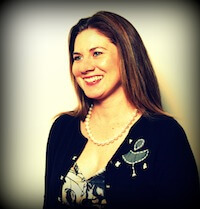 Today’s guest post is written by Jayme Thomason.
Today’s guest post is written by Jayme Thomason.
I spoke at a content marketing conference a while back, and sat horrified in the audience while another speaker advised an audience full of newbies that 50 short, keyword optimized posts are better than a few longer pieces.
I understand his intentions, and that he probably wasn’t condoning crap content. But what all those new, eager marketers in the audience heard was “quantity over quality.”
This is not good advice.
This is the mentality that is creating our global content pollution problem.
If this is the way we’re going to conduct our content marketing initiatives, then we’ve missed the point of content marketing altogether. The point I’m referring to is much like the concept of PR: Build relationships by adding value. (Read Lisa Gerber’s article for a great example of this.)
People are not stupid. They can tell when an article is stuffed full of keywords, and they know why: To bait them.
If we continue to view content as bait with the only purpose being to get them to visit our websites and buy something, we’re essentially taking the old push advertising model and trying to adapt it to content (which won’t work).
The reason any of us do any kind of marketing is to sell more of our stuff. We all know that. But our marketing department’s attitude should be: “We provide value to our target audience so they build a favorable opinion of us. That way, when we share good content with our network, they share it with their network.”
Bait content does not get shared. It’s viewed once, the reader is let down, and they move on. You’ve lost them.
Let’s compare two scenarios.
- Acme Company does some keyword research to find out what their customers are searching for relating to what Acme company produces. They give the list to the writers and say, “make sure these keywords appear in the headline, subheadline, and six times throughout the body copy.” I need 50 of these articles per week.[Later] Potential customer finds one of their articles on one of those weird article sites that has those annoying advertising links that pop up (because they don’t want this crap on their blog). Potential customer reads what she can of the article, assumes the writer was drunk when he wrote it because it makes no sense, and she moves on. No click-through to their site.
- Smartie Company also does some keyword research to find out what questions and needs their customers have which prompt them to search for the products Smartie Company produces. They read all the articles their customers are reading to get a better understanding of what content is out there and what “holes” exist that Smartie can fill. They get in a room and brainstorm with their sales team to develop an editorial calendar with six months’ worth of well-though-out, valuable, optimized content.[Later] Potential customer finds an article while searching for a solution to a problem, finds a helpful step-by-step article giving her exactly what she needs, and then shares it with her LinkedIn group. She bookmarks Smartie’s blog site so she can come back later.
These scenarios may be a bit extreme, but my point is good content marketing has everything to do with your mindset. To impress robots, go with Acme’s strategy, for long-term, real company growth, go with Smartie’s.
There’s a lot of competition on the web for your audience’s eyeballs. Every time someone shares something you’ve written, it’s like getting a vote. Pay attention to the articles getting the most votes, and you can better understand what your target audience wants from you.
True story, one of our customers, an online monitoring company, was surprised by this: They have a fantastic, well-strategized blog where they talk about trends and insights about online behaviors. You know the post that, to this day, got the most shares, likes, and tweets? A coupon for free doughnuts on National Doughnut Day.
Interesting, how we think what our customers want from us is meaty thought leadership, but sometimes, they’re just hungry and feel like having a doughnut. This customer did not change their content strategy because of this, but now they’re not afraid to throw in some fun. Just some “food” for thought.
When asked about the quantity over quality debate (and there is one going on), we tell our customers this: Content marketing only works if you can sustain it. And you can only sustain it if you’re publishing thoughtful, valuable content at a frequency you’re comfortable with.
Bait content is not sustainable. What the other speaker should have said was, “whether it’s one post a day or one post a week, as long as it’s adding value to your customers, then you’re doing it right.”
What do you think?
Jayme Thomason is as the co-founder and CEO of DivvyHQ, the simple, spreadsheet-free editorial calendar application built specifically for content managers who manage multiple projects, clients, and teams and are longing for a simpler solution. She is on a mission to take her simple approach to content marketing to the masses. Follow @jaymethomason on Twitter and @divvyhq or email her at jayme@divvyhq.com.